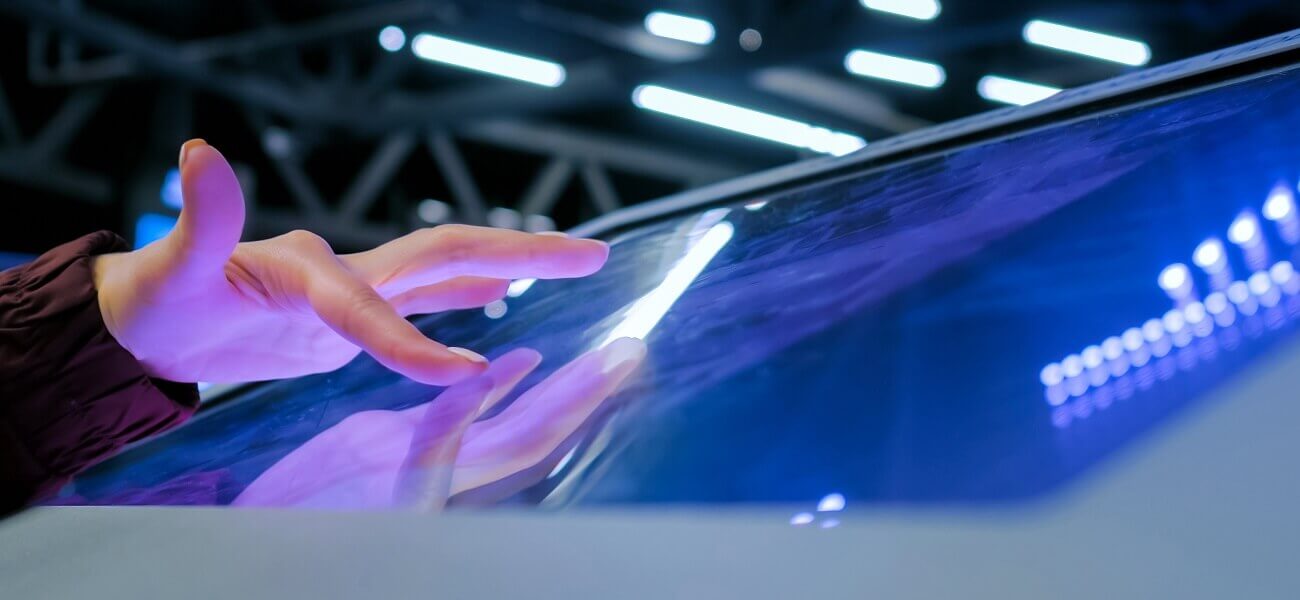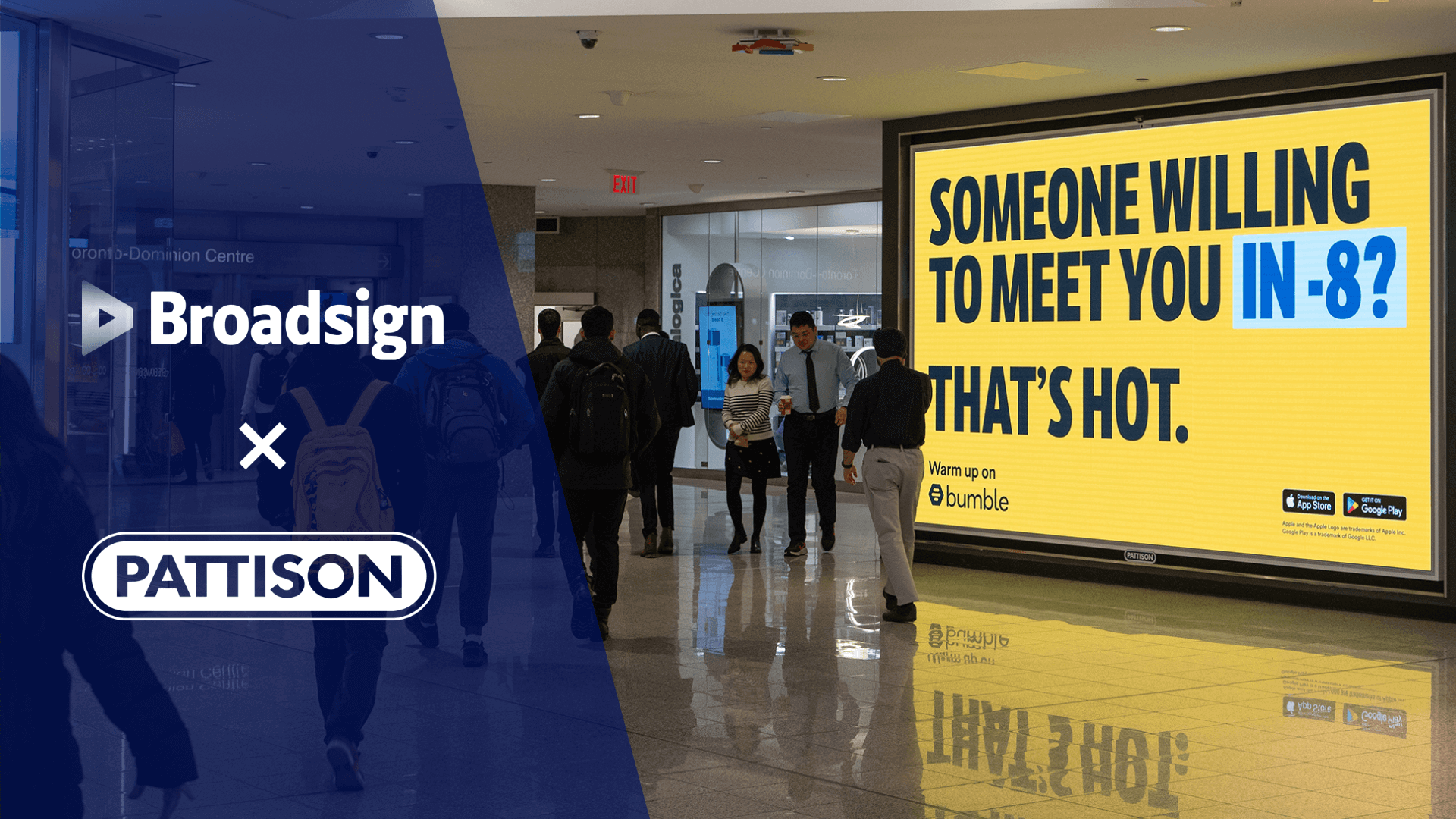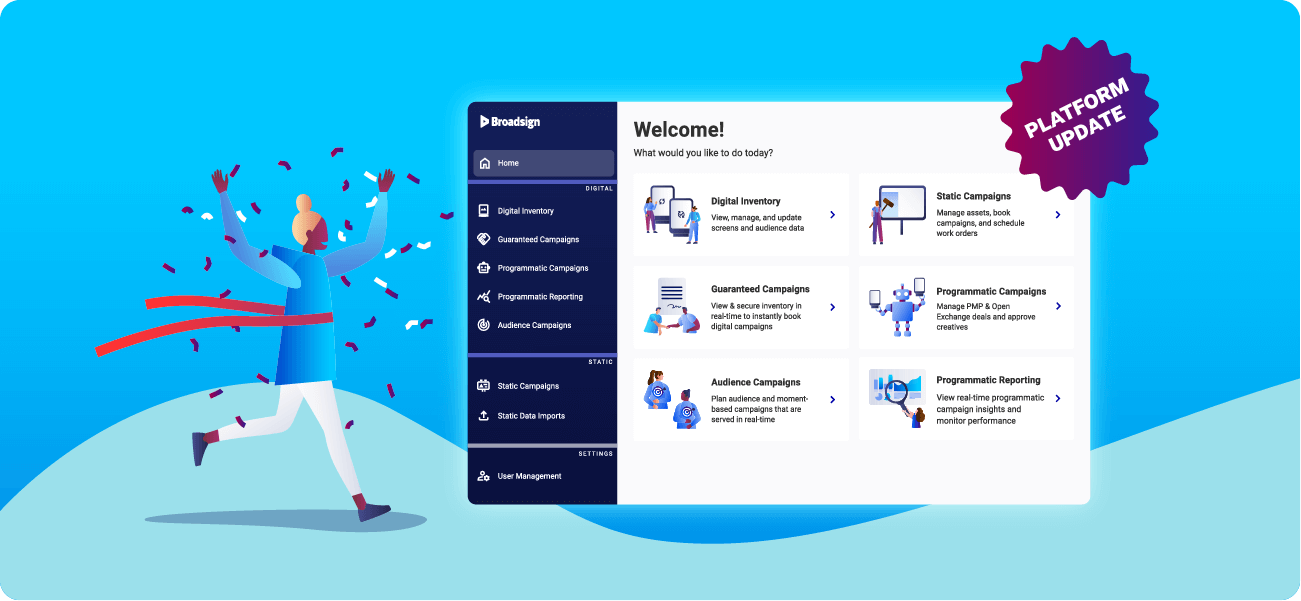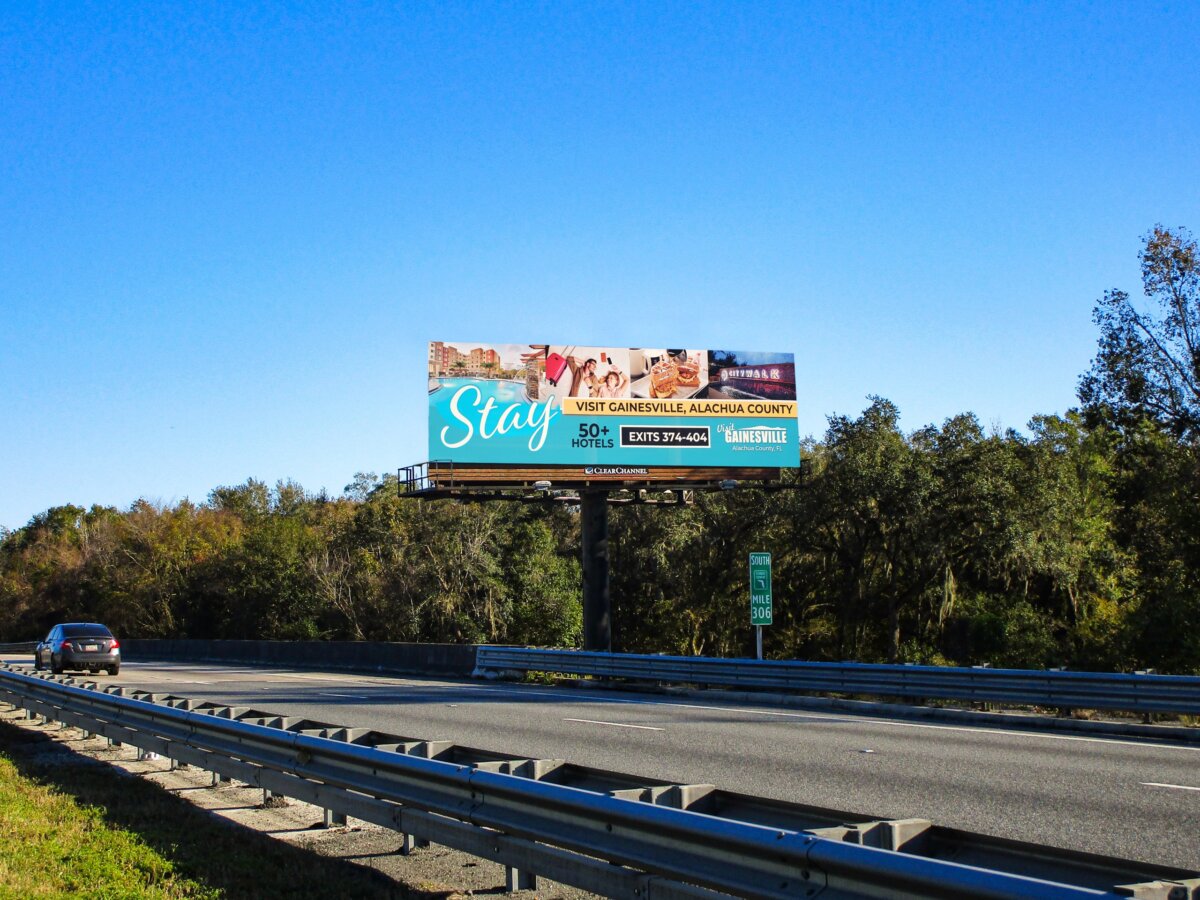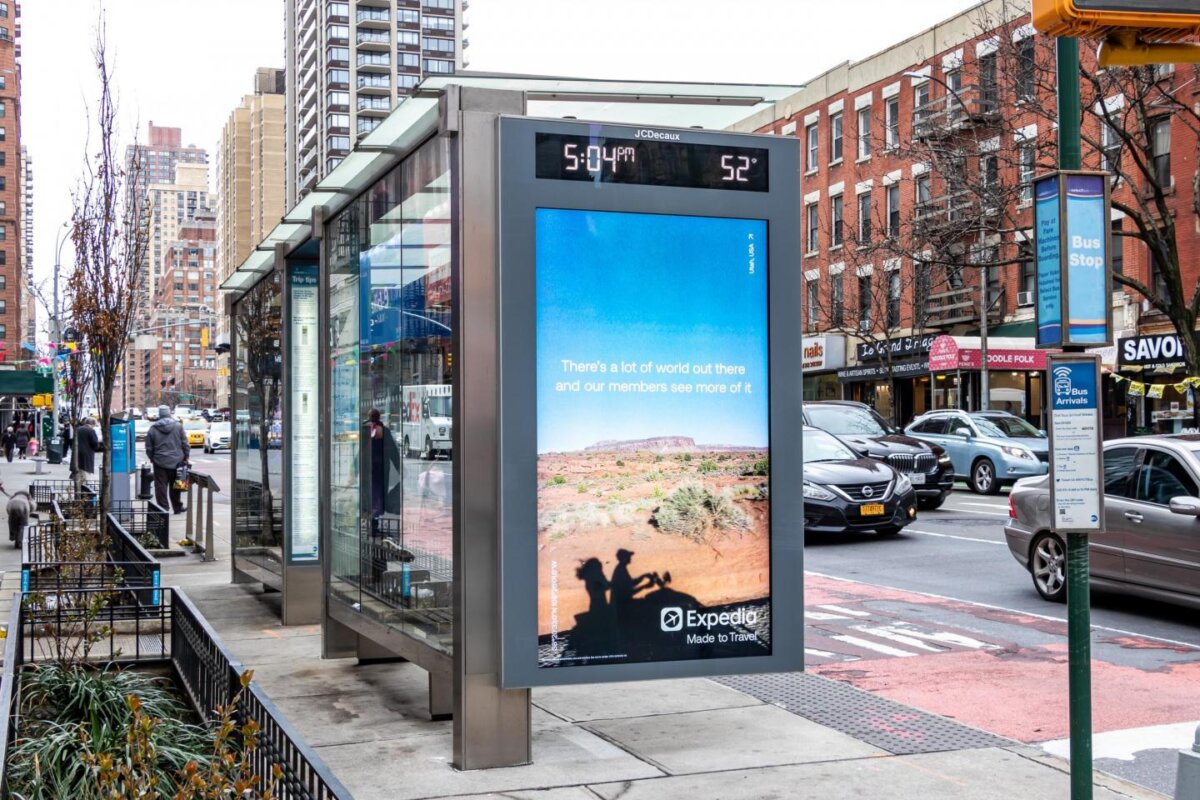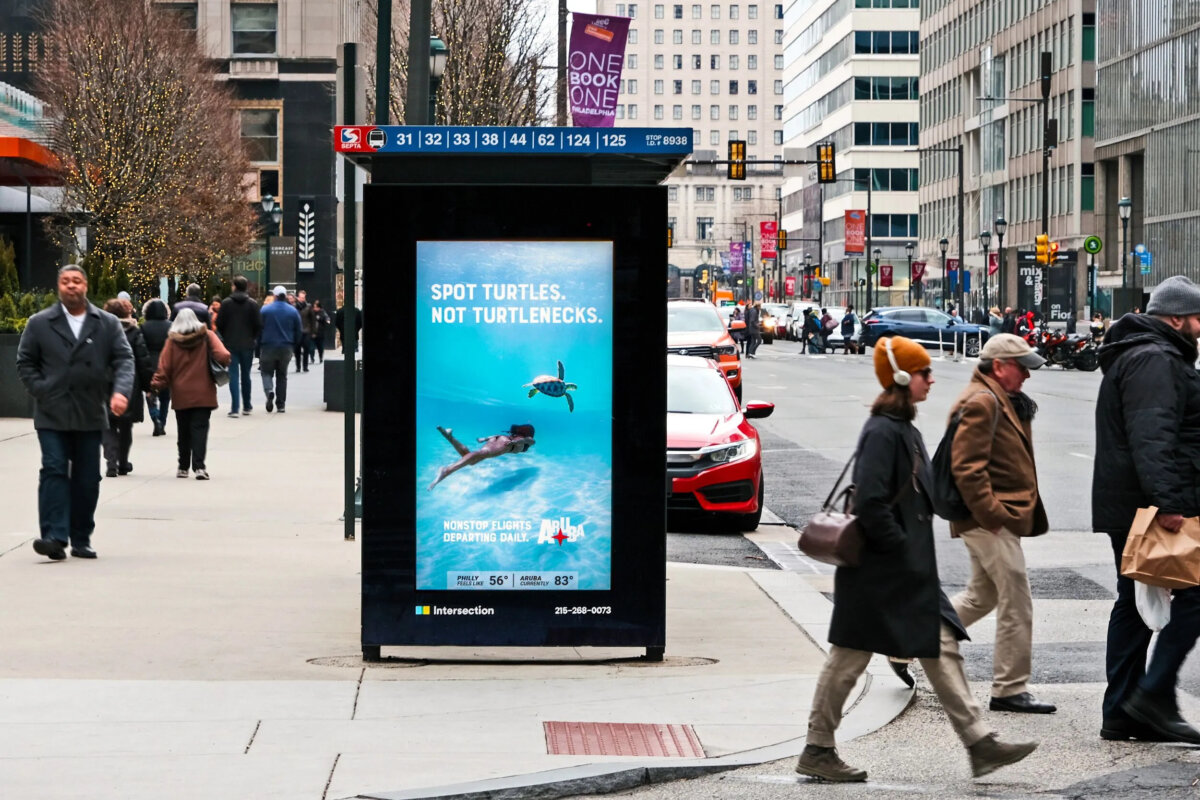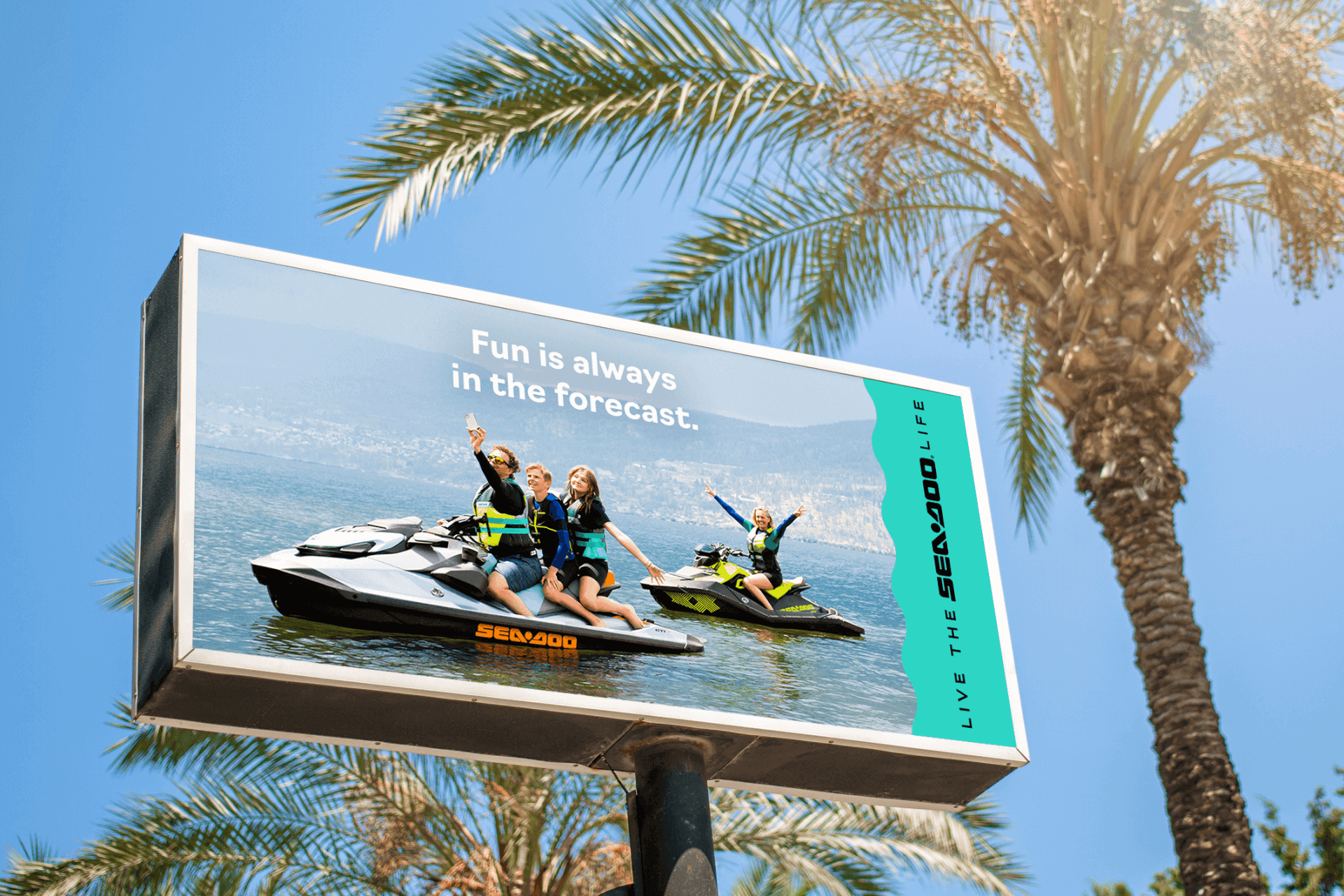| October 11, 2021
Interactive digital signage: The future of DOOH advertising
There has never been a more exciting time for the digital out-of-home industry. From new emerging formats to the accelerated adoption of dynamic DOOH, the innovation taking place in digital out-of-home advertising isn’t slowing down. As digital signage makes its way into new places and spaces, advertisers need to find new ways of catching the attention of their target audience.
That’s where interactivity can make a real difference. For marketing teams, interactivity presents an opportunity to differentiate their brand with effective and engaging stories. For media owners, supporting interactive content can mean more exciting and engaging content across their network, higher premiums associated with booking this sort of complex campaign, and the opportunity to make a splash with delighted social media posts showing off the campaign in action.
What is interactive digital signage?
While personalization has been a hot topic in digital marketing the past few years, the interactive element is what’s really rising to the forefront. These days, you can find interactive ads on desktop, tablet, and—perhaps most frequently—mobile devices. But online isn’t the only place that you can go wild with the level of interactivity; features like advanced audience targeting and anonymized real-time sensors make DOOH uniquely well-suited to creating powerful interactive experiences.
Put simply, interactive digital signage turns traditional advertising into a participatory activity: it invites consumers to physically engage with the display content and find information that’s relevant to them. Whereas traditional digital signage broadcasts information in a single direction, displaying content regardless of whether or not viewers are paying attention, interactive digital signage turns viewers into users.’
Example: This campaign for Dancing with the Stars Australia invited passers-by to push a button on the digital billboard and follow the interactive video tutorial that appeared on the screen. It’s a fun and engaging campaign, and a great example of the potential offered by interactivity.
A brief history of interactive digital signage
The origin of today’s interactive displays can be traced back to the first commercial appearance of touchscreen technology in the early 1980s. Interactive kiosks in the form of the automated teller machine (ATM) were also coming into widespread use at that time, and the ability for customers to interact in that way laid the foundations for the interactive digital signage technologies still emerging today.
While early advancements in digital signage were focused on improving the hardware—with big leaps in the industry being driven by the advent of thinner, brighter displays, improved graphics, and better overall reliability—the significance of those developments in display technology eventually impacted the content and software side. As responsive and dynamic display technology became more affordable and easily available, the market was flooded with digital signage solutions all competing for consumers’ attention. In response, marketers and network owners have started turning to contextualized, dynamic, and perhaps most importantly, interactive content in order to cut through all the noise and preserve the effectiveness of commercial messaging in the DOOH space.
Watch: An interactive DOOH campaign pulling content from social media
Why make digital signage interactive?
The average city-dweller today probably passes by a good number of digital displays on any given day, and most aren’t interactive. With interactive capability generally requiring additional technology and setup, it tends to come at an additional cost. This is both for the media owners who need to outfit the signage and the buyers looking to purchase more intricate campaigns. Is the added expense of investing in interactive signage justified?
The answer largely comes down to memorability in a crowded advertising landscape. According to a report from MAGNA, interactive video ads get 47% more viewing time than non-interactive ones and are more memorable to consumers, regardless of whether or not they choose to interact. People are also more willing to share personal information in exchange for personalization and value; by displaying content that’s relevant and engaging, your audience is more likely to feel comfortable with sharing their data and your buyers can gain insight into customer behaviors which can help inform their future strategies.
Perhaps most crucially for network owners is the fact that potential ad buyers are convinced of interactivity’s effectiveness: 81% of marketers agree that interactive content grabs attention more effectively than static content and 79% believe that it enhances retention of brand messaging when combined with traditional marketing tactics. With high-end buyers seeking ways to make their campaigns stand out, only those DOOH networks that are capable of the interactivity they desire will be in contention to run their campaigns.
Watch: An interactive AR campaign from JCDecaux and BBC Earth
What you need for interactive digital signage
Good interactive content takes a bit of work to bring to life. Network owners will need to secure hardware capable of powering the interactive content, and also drive that hardware with software that can connect all the right pieces together for the content to run flawlessly.
Extensible software offering an open API will generally be the best choice for interactive signage projects, though it is important too to ensure the solution is secure and reliable. Interactive displays within arm’s reach could become targets for tampering by troublemakers, so it’s particularly important that they are secured.
Finally, the signage needs content to be interacted with. This content takes various forms, dependent on the nature of the display. Interactive billboards, for instance, are likely going to display interactive content provided by a media buyer looking to place a particular promotional campaign. For an indoor display, such as a wayfinding terminal in a mall, the interactive content is likely a concern to be handled by the network owners themselves. This isn’t to say that the content must be created in-house. A number of digital signage content providers specialize in providing interactive content that can be tailored to the specific needs of a given network.
Interactive activation for digital signage
“Interactive digital signage” is a broad category, uniting many very different kinds of projects. Here is an overview of some of the most common types of interactivity that are used.
Touch
One of the most common ways digital signage is made interactive is by deploying a touchscreen. The ubiquity of touchscreens today makes this a safe bet for interaction, as there are unlikely to be many barriers to most individuals simply walking up and engaging with the installation. Touch is commonly employed to let audiences browse information on a screen or manipulate on-screen elements.
Common uses: Wayfinding, self-serve kiosks, special ad campaigns
Example: The LinkNYC network of touch-enabled kiosks gives people in New York City access to phone calls, WiFi, directions, and more, all paid for by advertising on the kiosk.
Check out how Intersection bettered the lives of New Yorkers using dynamic DOOH.
Gesture/motion tracking
Gesture control is a lot like touch with a lot more style and a bit less precision. People can walk up and move their hands in the air in front of the sign, with cameras connected to the installation registering the types and speed of the movements being made and triggering corresponding reactions on-screen. This isn’t a particularly common form of interactivity in the digital signage space, though advances in gesture control and greater awareness of hygiene concerns post-pandemic are seeing it become more common.
Common uses: In-store virtual browsing or shopping, interactive advertising
Example: This campaign by Swarovski uses motion and gesture tracking to turn onlookers into participants in an interactive game.
Social media
Social media has been a mainstay of interactive digital signage campaigns for years now, thanks largely to social being such a great tool both for driving engagement and generating onscreen content. The specific implementation of social interactivity varies depending on the campaign. A typical example involves users posting to their own social accounts using a specific hashtag and having their post appear onscreen, sometimes after a moderation process is completed.
Common uses: Advertising
Example: The #SendingLove campaign, facilitated by the World Out of Home Organization, promoted user-submitted messages of love in cities around the world during the fight against the COVID-19.
Mobile
Increasingly, campaigns are making use of the capabilities of mobile phones to deliver some really interesting interactive content. Special applications or mobile websites are created to grant audiences the ability to manipulate onscreen elements or objects, with audiences prompted to visit or download by visiting a site displayed on the billboard. This can be a fun way to put games up on the screen and encourage mass participation in a campaign delivered to a nearby digital billboard.
Common uses: Ad-supported games, interactive advertising, augmented reality
RFID/NFC
RFID (radio frequency identification) and NFC (near field communication) are often spoken about interchangeably, as they achieve similar things with only minor differences. They involve the use of passive chips that interact with a frequency emitted by a powered device, like a smartphone, to deliver information or trigger a reaction. The technology is becoming more common thanks to contactless payment apps promoted by major cellphone companies but might be a bit of a risky choice for an interactive advertising campaign. Many phones today still do not support these technologies.
Augmented reality & visual recognition
Some of the best interactive DOOH campaigns are also some of the simplest. Installing cameras near a digital display and hooking them up to a suitable PC can allow for some really neat augmented reality campaigns. This can be a fun way to bring onlookers and the world around them right into a fun new experience. Other uses include using cameras to do basic visual identification and have campaigns deliver messaging tailored to whoever they see standing by. Different content, for instance, could be delivered depending on whether the onlooker is an adult or a child.
Common uses: AR, dynamic campaigns
Example: JCDecaux and Telia Estonia promoted the launch of a new TV channel, called ‘Inspira’, with Estonia’s first outdoor AR campaign. With 10% of the Estonian population tuning in to the new channel during the first month, we think it’s safe to say this campaign had a positive impact.
QR Codes
QR codes are a fairly passive form of interactivity, offering passers-by the ability to use their phone to receive information or navigate to a website by scanning a code with a capable app. It is generally used to accomplish similar things to NFC campaigns, but is more accessible. Where phones need to include specific hardware to access NFC content, they just need a QR reader application on their smartphone to access codes.
Common uses: Directions, information and website sharing
Example: This campaign by Google Play and oOh! Media offered users the choice of both NFC and QR codes to access media promoted by the campaign.
Key software capabilities for interactive digital signage
Good interactive content takes a bit of work to bring to life. In addition to securing hardware capable of powering the interactive content, network owners will need to select the best digital signage software to connect all the right pieces together and ensure the content runs flawlessly.
Here’s a look at some of the specific features we think you should keep in mind when shopping for digital signage software.
Extensibility
Many interactive DOOH campaigns require real-time integration with external data feeds, audience analytics tools, and other capabilities that generally aren’t included in digital signage software by default.
Extensible software offering an open API will generally be the best choice for interactive signage projects, though it is important too to ensure the solution is secure and reliable. You don’t want to go to the trouble of integrating a service into your network only to have your players fail to play your interactive content.
Dynamic content playback
Since interactive digital signage is a subset of dynamic DOOH, your digital signage software needs to have the ability to change on-screen content in response to external data or triggers. But even though the number of brands demanding dynamic ad capabilities is growing, not all software is capable of displaying this type of content.
To make sure your network doesn’t miss out on great opportunities, check that your digital signage software supports dynamic playback more generally, and is capable of supporting the specific aspects (touchscreen, gesture control, etc.) of your interactive campaigns.
Mobile device integration or coordination
Thanks to advancements in mobile and DOOH advertising technology, it’s easier than ever for brands to create seamless omnichannel campaigns across platforms. Geofencing and scannable QR codes let users engage with digital kiosks and other touchscreen displays without making physical contact, and can help bring interactivity to projected content, displays behind windows, and large video wall displays.
Less direct methods of interactivity have been gaining traction in the wake of COVID-19, so we recommend choosing a digital signage software that supports this type of approach via mobile device integrations.
As interactive technology gets cheaper and more widespread, it’s likely that interactivity will increasingly be seen as a must-have for many networks operating in the digital space. Investing in the right tech today will put network owners and their businesses on the most productive path in the years to come.
Do you want to build an interactive digital signage network?
Request your demo of Broadsign to see how our software can help!
